The dinghy ride from the town of Daru to Sigabaduru village in the South Fly District of Papua New Guinea (PNG) was about three hours long, but smooth and enjoyable. The sea was calm on a dull day without wind. These were the perfect conditions for exploring the scenic collection of islands dispersed throughout the Torres Strait, most of which can be found on its Australian side.
Similar to the six eastern coastal villages of South Fly, livelihoods in Sigabduru are primarily dependent on fishing and marine resources. However, the most important issues affecting fisheries here are quite different. In the eastern villages, the main problems are poaching by settlers in Daru and overharvesting of fisheries and marine resources; market access was not a major issue, due to the close proximity to fish markets and fish buyers in Daru. Villagers can therefore raise fisheries issues easily with the local authorities in Daru to seek help. Sigabaduru, on the other hand, has different concerns. Isolated at the far western edge of the South Fly coast, poaching and overharvesting are not of major concern here.

Given their remoteness to Daru, villagers in Sigabaduru, like those in other western South Fly villages, are more concerned about the lack of access to fish markets and the absence of effective governance. Unable to count on support from outside, villagers here are self-reliant out of necessity. The village treaty chairman mentioned that they have enough fish and marine resources for consumption and sale, but the remoteness of the village prevents them from being able to sell their fish further afield and therefore limits their livelihood capacity. The provincial town of Daru is three hours away, so fish buyers hardly go to the villages and cannot take their catch to Daru without proper fuel reserves for outboard motors. Merauke, in Indonesia’s Papua province, is about six hours away; although Saibai Island in Australia is a mere five minutes’ boat ride away, borders are tightly controlled. As Mr Bosen Kadiba explains, “we have food but no money, because we are very remote and cannot take our fish to sell in Daru without preserving the fish in ice.”
Due to the lack of markets for their catch, villagers limit the quantities of fish they harvest in order to avoid a surplus of stock. In addition, and as part of their self-reliance, they also employ community management in their fisheries and in relation to their marine resources. There are two community-imposed fisheries management measures: the first is protection of the swamp behind the village, which is the primary spawning ground for Barramundi in PNG. The community has imposed a rule that there should be no burning of grass near the swamp – anyone not complying with this rule will be dealt with as deemed appropriate by the community, through the village court. The second fisheries management measure in Sigabaduru is the prohibition of nets being used in the coastal fishing grounds for harvesting jewfish swim bladders; fishers are only allowed to fish using hook and line, while people are instructed by the village law and order committee to destroy any nets found in those areas. This measure has been implemented to ensure the right amount of jewfish are caught for bladder extraction; the meat is eaten too, as overharvesting using nets leads to discarding of jewfish carcasses.

A fisheries management plan for the region has the potential to reverse trends of overfishing and contribute to sustainable fishing practices. Having already implemented a number of fisheries management measures on their own, Sigabaduru villagers are keen to work with the ATSEA-2 Project to develop and implement a community-based artisanal fisheries management plan, aimed at managing their fisheries and marine resources better. The key to success in this regard will be cooperation and concerted efforts between various communities and stakeholders in the region. “We are taking action to conserve the fisheries resources in our village,” commented Mr. Kadiba, “but if other villages keep overharvesting these migratory shared resources, our actions will not make much difference,” he added.
The ATSEA-2 Project continues to work with South Fly villagers to develop an Artisanal Fishery Management Plan for PNG. Most recently, the team has been travelling through a number of other villages to the west of the South Fly coast, in order to collect data and information on fisheries and socioeconomics. The Programme will address factors that have constrained sustainable fisheries management in ATS littoral countries, including overfishing, destruction of natural habitats and IUU fishing. This will be accomplished through the implementation and adoption of comprehensive and integrated ecosystem-based approaches to natural resource management and conservation at the national and regional levels. Specifically for Papua New Guinea, artisanal fisheries management will be implemented in the South Fly region.
This article was originally published on the GEF IW:Learn Website.
(By Kenneth Yhuanje)


